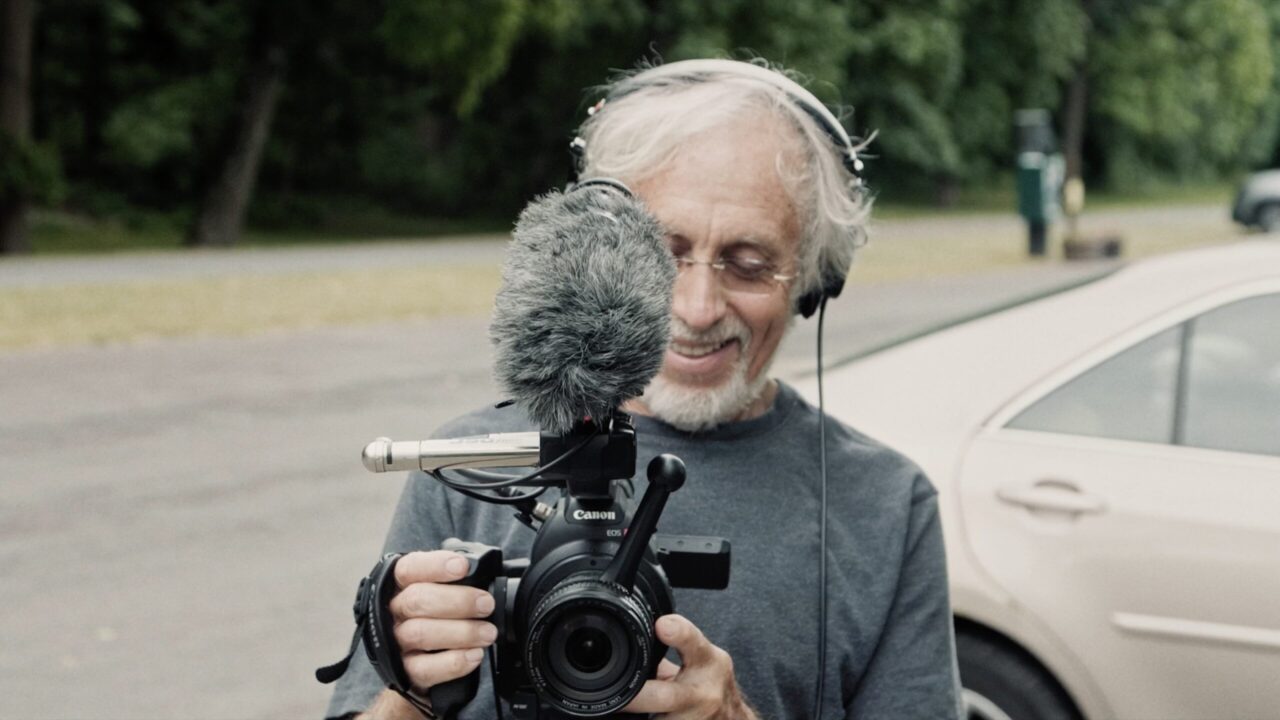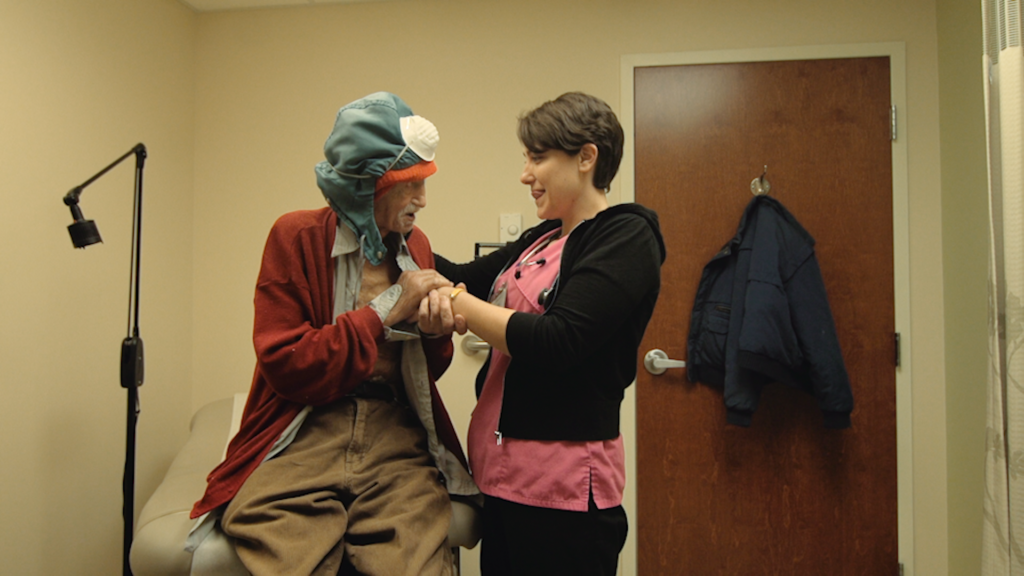No Place for Sissies
An octogenarian filmmaker turns his camera down life’s homestretch. Filmmaker Ralph Arlyck. (Courtesy of Timed Exposures)
Filmmaker Ralph Arlyck. (Courtesy of Timed Exposures)
Old age, said Bette Davis, is no place for sissies. Neither, she might have added, is the Hudson Valley in winter. “I Like it Here” is Ralph Arlyck’s ode to both places, a meditation on mortality as a group portrait of senior living in the Catskills. Although a native at 84, he approaches being old with a traveler’s wonder. The result is a film about aging for all ages, all the way down to those still young enough to think it will never happen to them. Arlyck himself wants to know, “How did this happen to me?”
The answer, of course, is that it happens while we’re busy, perhaps too busy, being young. One day, we are sprite and desirable; the next, we’re waking up to strange pains and noticing that our friends are dropping, not like flies, but in a manner Arlyck more gently likens to “overripe fruit.” Among the many shocks to be absorbed with the fact of old age is a realization that we have hastened the sly process by not paying attention. “I’ve spent my life waiting for the hours or days or weeks to pass so that the next thing on the schedule could arrive,” Arlyck narrates. “Now this seems like rooting for the wrong side.”
Arlyck builds the story of his life around vignettes of friends and neighbors spread across a bucolic archipelago of unnamed hamlets within striking distance of Woodstock. Aside from Ernie, an elderly Hungarian-emigre survivalist who lives in an unheated shack in the nearby woods, most are middle-class creatives who retired to the Catskills after long and successful careers in the city. All are dealing in different ways with the creeping shadow, each with varying degrees of scar tissue accumulated over the decades. Among the film’s insights is that the latter can help manage the anxiety created by the former. A friend of Arlyck’s whose daughter committed suicide parries his questions about death with a tranquility of mind that clearly impresses the director. “Once you’ve lost a daughter, your own aging and death can’t seem like a very big deal,” Arlyck observes.
The result is a film about aging for all ages, all the way down to those still young enough to think it will never happen to them.
Arlyk began shooting “I Like It Here” on the eve of the pandemic. Before he finished more than three years later, death had cooperated with his themes. Ernie, the émigré in the woods, takes sick and dies, as does another neighbor diagnosed with dementia. But it is the death of Arlyck’s cat that brings the director’s own demise into sharpest relief: His next pet, he realizes, will likely outlive him, rather than the other way around. This is just one of many “lasts” that Arlyck sees piling up the way “firsts” did in his youth. Because he doesn’t go through many pencils, he is shocked to realize upon opening a new box of No. 2’s, “that this is the last box of pencils I’ll ever buy.”
The film is less concerned with how many pencils will be in the box when he dies than it is with what happens between now and then. As Arlyck can see all around him, the body ages in one direction only. There will be decline — perhaps sudden, perhaps slow, but decline. He remembers with chilled poignancy the last years of his own parents, who lived into their 90s. “Will we also fall asleep at our sons’ houses?” Like death, Arlyck’s body became a character all too eager to dramatize his subjects. Midway through filming, he falls off his bicycle on the way to pick up his daily copy of the New York Times. In the hospital, we see, for the third time, recurring footage of a ceiling as observed from a speeding gurney. What had been a foreboding interstitial is now revealed to be Arlyck’s view on the way to surgery. He leaves the hospital in a wheelchair with a steel rod in his leg. A plastic chair is placed in the shower. Arlyck is already older than when he started the film. Still, he likes it here. Old age might not be for the weak, but it is a place where one can be happy. Arlyck is careful to note that having a home with beautiful mountain views and a little money doesn’t hurt.

Documentarians are well-positioned for autobiographical retrospectives, because they’ve usually spent their lives recording. Arlyck has been doing so compulsively since the mid-1960s. He has Super 8 footage of his wife the summer they met while in a Peace Corps program and scratchy recordings of conversations with his Yiddish-speaking grandfather, who told the young Arlyck shortly before his own death, “My days is counted!” Arlyck hasn’t changed much in this regard, often to the annoyance of others. His neurologist asks him to please put the camera away during a visit. More than once, his wife becomes vexed with his constant filming and direction — his “total disregard for privacy” — and we are left to imagine her offscreen reaction to Arlyck’s decision to include a segment on the couple’s sex toy collection (described as “aides,” as if to medicalize them). In one of the film’s many moving voiceovers, Arlyck reflects on the possibility that his wife may not always recognize him or his camera, or that he may not always recognize the woman in the frame. “There’s always the looming question of who will bury whom,” he says. “Or who will visit the other in a nursing home. Until you’re no longer recognized. And maybe your spouse has become attached to someone else. I hope I deal with that one elegantly.”
But that day isn’t yet, and the film ends with Arlyck more concerned with a mental disease that also afflicts the young — Milton’s “last infirmity of the noble mind,” the professional ego. He still fantasizes that his corpus will merit “even a small New York Times obituary,” before backtracking to say he’d be happy with a write-up in the local paper. Perhaps “I Like It Here” will help him get a Times obit, perhaps not. Whether it’s his best film feels less significant than the fact that, like the box of pencils, it is almost surely his last. Not because it’s inconceivable he could make another. Norman Lear was still writing and shopping scripts to networks at 100. But after producing such an affecting statement about the biggest story of them all, what more is there to say?
“I Like it Here” is playing at New Plaza Cinema in New York City and will have a wider release next month.
Your support is crucial...As we navigate an uncertain 2025, with a new administration questioning press freedoms, the risks are clear: our ability to report freely is under threat.
Your tax-deductible donation enables us to dig deeper, delivering fearless investigative reporting and analysis that exposes the reality beneath the headlines — without compromise.
Now is the time to take action. Stand with our courageous journalists. Donate today to protect a free press, uphold democracy and uncover the stories that need to be told.







You need to be a supporter to comment.
There are currently no responses to this article.
Be the first to respond.